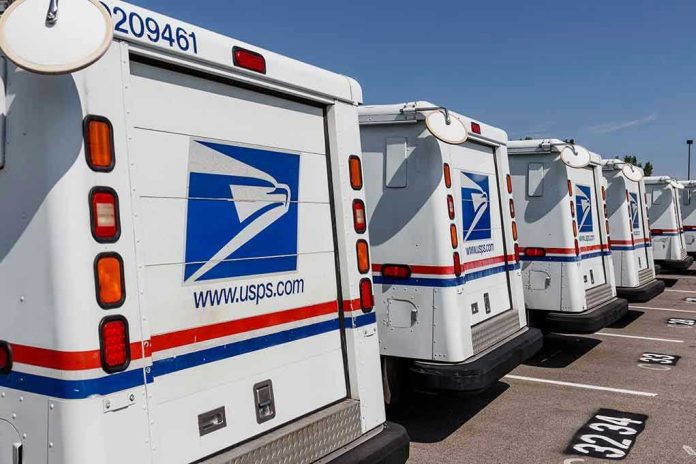
The former Biden administration’s $10 billion push for a green USPS fleet has resulted in just 250 electric trucks over two years, sparking outrage and questions about government efficiency.
At a Glance
- USPS aimed to modernize its fleet with electric vehicles, backed by Biden’s environmental agenda.
- Despite a $10 billion budget, only 250 electric trucks have been produced in two years.
- The project faces criticism for production delays and engineering challenges.
- Republicans challenge the project’s cost-effectiveness and seek to rescind funding.
A Flawed Electric Dream
The ambitious USPS electrification project, heralded by the former Biden administration as a cornerstone of its environmental goals, has turned into a colossal disappointment. With only 250 electric trucks produced out of a planned 106,000 new vehicles, the initiative has floundered despite being armed with nearly $10 billion in funding. This comes as yet another example of how government overreach and mismanagement can derail taxpayer-funded projects that promised efficiency and sustainability.
Originally, the project was to replace outdated and inefficient Grumman Long Life Vehicles with modern battery electric vehicles (BEVs), reducing emissions and enhancing operational efficiency. But what we see here is an administration that failed to deliver on its promises, leaving the USPS with a paltry fleet of 250 trucks and an extraordinary financial burden. With $3 billion allocated from the Inflation Reduction Act of 2022, the USPS still struggles to meet its targets, raising questions about fiscal responsibility and planning.
Massive Funding, Minimal Results
In a deal with Oshkosh Defense, the USPS planned to produce 35,000 Next Generation Delivery Vehicles (NGDVs) alongside Ford E-Transit vans. But production delays and engineering challenges have hindered progress, leaving the USPS with an embarrassingly small number of new vehicles. It’s a staggering example of how government intervention often leads to bloated projects that yield little but cost a fortune. The former Biden administration’s vision of a green fleet is stalled, overshadowed by inefficacy and waste.
Congressional Republicans have rightly criticized the project for its exorbitant costs and failure to meet goals. They propose rescinding funds and consider selling off electric vehicles to recover financial losses. This misadventure serves as a cautionary tale against unchecked government spending and intervention that fails to deliver tangible benefits. Why should taxpayers foot the bill for such impractical dreams when fiscal prudence and accountability are glaringly absent?
Political Ramifications and Future Prospects
The USPS electrification initiative is a case study in how political agendas can mislead public resources and public trust. While Democrats touted the project as a landmark environmental effort, Republicans view it as a textbook example of government waste. With the Biden administration now a memory, the focus shifts towards ensuring such missteps are not repeated, prioritizing efficient spending and practical solutions over grandiose but ineffective plans.
As the USPS and its stakeholders grapple with the project’s shortcomings, it remains to be seen how the fleet modernization will proceed. With Trump back in office, there is hope for a more pragmatic approach that values taxpayer money and emphasizes results over rhetoric. The lessons learned here should guide the future of government-led initiatives, steering clear from the pitfalls of the past two years.









